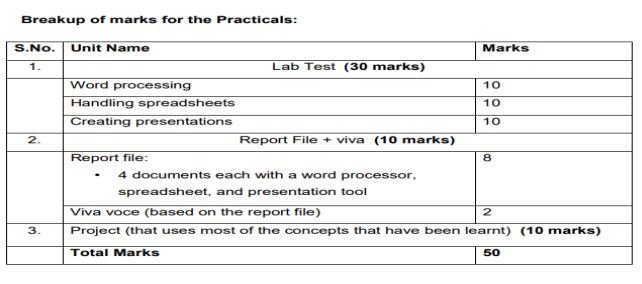In this Article we will providing you complete authenticate information regarding Jawahar Navodaya Vidyalaya Download Navodaya Class 9 Computer Science Syllabus for the Session 2024-25
Navodaya Vidyalaya Samiti Recently Introduced the New Post of Computer – TGT Computer Science. TGT CS will teach in Class 6 to 9 CBSE Board.
Navodaya Class 9 Computer Syllabus for 2025-26
Here we are giving Syllabus of Computer Science Subject in Class Wise.
For Class IX – Computer Science

| Sr.No | Month | Units / Chapters Covered |
| 1 | April | Unit 1: Basics of Information Technology 1. Computer Systems: characteristics of a computer, components of a computer system – CPU, memory, storage devices and I/O devices 2. Memory: primary (RAM and ROM) and secondary memory • Storage devices: hard disk, CD ROM, DVD, pen/flash drive, memory stick |
| 2 | July | Unit 1: Basics of Information Technology (Continued….) I/O devices: keyboard, mouse, monitor, printer, scanner, web camera Types of software: system software (operating system, device drivers), application software including mobile applications Computer networking: Type of networks: PAN, LAN, MAN, WAN, wired wireless communication, Wi-Fi, Bluetooth, cloud computers (Private/public) Multimedia: images, audio, video, animation |
| 3 | August | Unit 2: Cyber-safety Safely browsing the web and using social networks: identity protection, proper usage of passwords, privacy, confidentiality of information, cyber stalking, reporting cybercrimes Malware: Viruses, adware |
| 4 | September | Unit 3: Office tools a) Introduction to a word processor: create and save a document. b) Edit and format text: text style (B, I, U), font type, font size, text colour, alignment of text. Format paragraphs with line and/or paragraph spacing. Add headers and footers, numbering pages, grammar and spell check utilities, subscript and superscript, insert symbols, use print preview, and print a document. |
| 5 | October | Unit 3: Office tools (CONTIUNED……..) a) Insert pictures, change the page setting, add bullets and numbering, borders and shading, and insert tables – insert/delete rows and columns, merge and split cells. b) Use auto-format, track changes, review comments, use of drawing tools, shapes and mathematical symbols. |
| 6 | November | Unit 3: Office tools (CONTIUNED……..) a) Presentation tool: understand the concept of slide shows, basic elements of a slide, different types of slide layouts, create and save a presentation, and learn about the different views of a slide set – normal view, slide sorter view and handouts. b) Edit and format a slide: add titles, subtitles, text, background, and watermark, headers and footers, and slide numbers. |
| 7 | December | Unit 3: Office tools (CONTIUNED……..) a) Insert pictures from files, create animations, add sound effects, and rehearse timings. b) Spreadsheets: concept of a worksheet and a workbook, create and save a worksheet. c) Working with a spreadsheet: enter numbers, text, date/time, series using auto fill; edit and format a worksheet including changing the colour, size, font, alignment of text; insert and delete cells, rows and columns. Enter a formula using the operators (+,-,*, /), refer to cells, and print a worksheet. |
| 8 | January | Unit 3: Office tools (CONTIUNED……..) Use simple statistical functions: SUM (), AVERAGE (), MAX (), MIN (), IF () (without compound statements); embed charts of various types: line, pie, scatter, bar and area in a worksheet. |
| 9 | February | Lab Exercises a) Browser settings for a secure connection. b) Working with the operating system: Navigation of the file system using a mouse and keyboard. c) Word processing: create a text document; create a letter, report, and greeting card. d) Create a text document with figures in it. It should describe a concept taught in another course. e) Discuss the following in a text document about the basic organisation of a computer: CPU, memory, input/output devices, hard disk. e) Create a text document in an Indian language other than English. f) Create a presentation. g) Create a presentation with animation. h) Include existing images/ pictures in a presentation. i) Animate pictures and text with sound effects in a presentation j) Create a simple spreadsheet and perform the following operations: min, max, sum, and average. k) Create different types of charts using a spreadsheet: line, bar, area and pie. |
| 10 | March | Revision |
Breakup of Marks for the Practicals :

Sharing is Caring.
Thanks to Beloved Readers.











